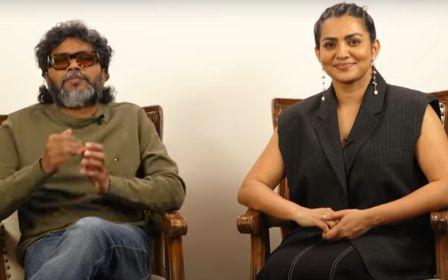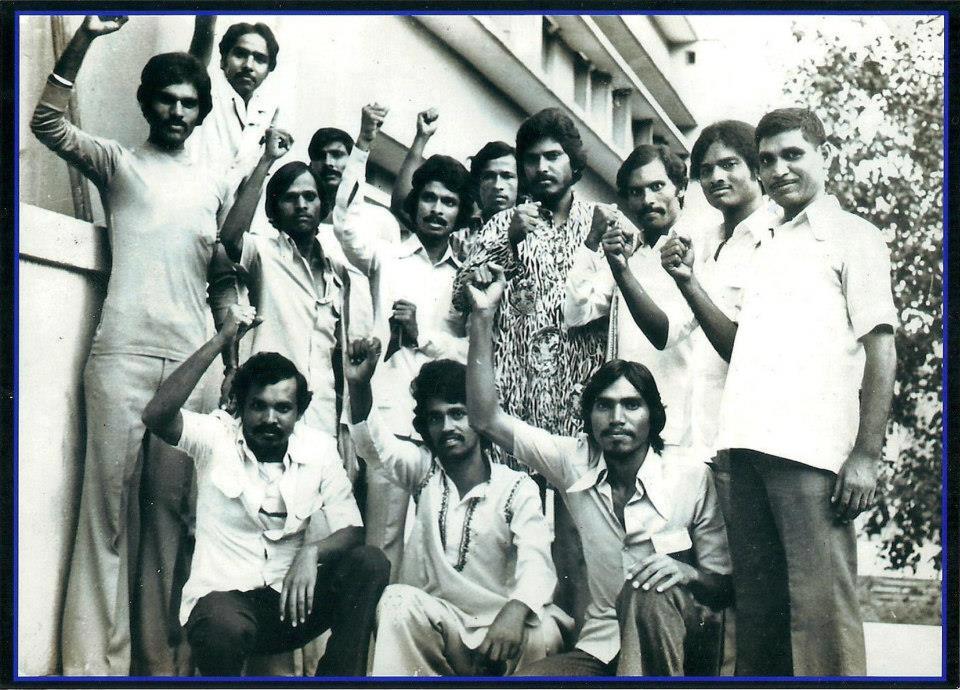Mayur S. Hadke
Thangalaan is a Tamil language movie directed by Pa Ranjith, known for his socially conscious movies that shed light on the lived realities of oppressed communities. Thangalaan is a movie that projected the struggle for dignity and self respect. The question of land and self respect was the central focus of the movie. Pa Ranjith highlighted the true lived realities of oppressed communities in a mythical narrative. He projected many concepts in Thangalaan in very short scenes.
The movie begins by highlighting dalitwada and the structure of the village. The primitive communism in marginalized communities is underlined. At the same timed. The movie explicitly depicts a comparative view of a marginalised caste woman and dominant caste woman. The day of a marginalised woman begins by working and not by praising deities, unlike dominant caste women. Women work in the fields with their partners for their livelihood.
In addition, Pa Ranjith has pointed out the democracy in the marginalized communities which is never seen in the dominant castes. There is recognition, liberty, mode of associated living, belongingness, constant interaction and kinship with each member of the community. How the members of the community arrive at a consensus on many issues was showcased in the movie. The marginalized communities do not have the notion of ‘personal’ but everything is social and political. The shared elements magnify the presence of culture in marginalized community. Furthermore, democracy and the non-hierarchical family of marginalized communities, unlike among the dominant caste hierarchical families, are marked out in movie. The presence of women in consensus, in decision making, quarrels and absence of padapuja of husband is clearly visible in movie.
Who philosophizes about the world ? The marginalized labourers philosophise about the world. The art of cutting the crop, making the medicine after the snake bite, the art of refining gold, of breaking stones, of crossing the river, of swimming, of fighting with wild animals, of digging land, assaying gold etc. are the knowledge and intelligence that were produced by marginalized labourers . Pa Ranjith, in Thangalaan, doesn’t fail to emphasize on the production of philosophy by marginalised labourers.
In addition, the movie highlighted the agrarian system and its exploitation by the local zamindars. The tillers of land, from marginalised communities, were not benefitting from what they produced. All the means of production lies to the cunning zamindars. Along with this it has shown the caste hierarchy in Zamindars, where the specific dominant caste was responsible for it. The land and power related land was dominated by high castes is well projected. Pa Ranjith underlined how the land became a tool of oppression, keeping away the autonomy of labourers.
The movie showed the struggle for land, resulting from the dependence of marginalised castes on the dominant castes. The authority on land, as an instrument of power, was taken away from the marginalised communities in a manipulative ‘system of priestcraft’. The marginalised workers had to labour for the zamindars and these zamindars were gaining the leisure from the labour of marginalised communities.
The movie has showcased the Aryan invasion where. But this invasion was not accepted everywhere. There was resistance to it as well. The resistance by the Nagavansh community is highlighted in the movie. The movie has underlined the resistance by Nagavanshis to the Vedic Aryan invasion and their varna system. The invasion and resistance took place in battle, where the Nagavanshi lost and that made them the untouchables and landless. The movie has highlighted the rejection of the theory of Aryan invasion by Ambedkar. The movie has shown the formation of the Shudra caste due to the resistance to the invasion by Vedic Aryans for land . Pa Ranjith used the sample of the Nagvanshi community for the illustration of Ambedkar’s theory . The struggle for land between the Vedic Aryans and communities, where the communities used to lose were categorised them as the Shudra caste. There were not only the Nagvanshis but other communities as well. For example, the ‘Dasa’ or ‘Dasyu’ who was defeated during resistance to the Vedic Aryans [BAWS. Vol. 7, Ch. VI].
One needs to understand what the Buddha’s statue is highlighted at the place of gold? Why did all the battles happen in front of Buddha’s statue? The statue of Buddha is highlighting the communities that were preserving the land of Buddha, from the invaders. Nagvanshis protected and preserved important Buddhist teachings, playing a key role in the development and spread of Mahayana philosophy. All the battles taking place in front of Buddha’s statue are illustrating that the invaders were trying to capture the land of Buddha. The kings were unable to access the gold due to the Nagwanshi. Hence in the provocation of the priest, a king cut down the head of Buddha’s statue. This scene highlighted the counter-revolution to Buddhism by Brahminism. The objective underlying behind this counter-revolution is that Buddhism expansion was causing a significant effect on declining Brahminism. This revolution and counter-revolution was brought to the forefront in Thangalaan. The presence of serpents or snakes highlights that Nagas were the worshippers of Serpent, before conversion. They believed serpents as their saviors. The presence of the Serpent with Aarthi, in protection of gold, was because the serpents were saviors of Nagvanshis in older times. Pa Ranjith astonishingly tried to draw attention towards Ambedkar’s essay on ‘Indian history is nothing but the struggle between Buddhism AND Brahminism’ (BAWS. Vol.17 part-3).
Bringing back the Buddha’s head from the well is a projection of the communities reviving the culture, philosophy and preaching of Buddha that were countered. They are pursuing an egalitarian and compassionate society. Communities are trying to use gold i.e. land for their upliftment. The detachment that Buddha preached to shun keep private property . But this land has become a cause for the deprivation of communities. Communities are demanding the land to restore their dignity. This entire demand is visible at the end of the movie where Thanga asks for some gold to restore and get back the land. For Thanga, gold was an instrument to get back land ownership. Gold was the instrument for reclamation of human personality and power . He was the first person in his entire village who take back his land through gold. With a small piece of gold Thanga sought to reclaim the land for his community.
The best part of the movie that I liked the most is, when Thanga comes back on horse, after meeting his family. He says, “Aye Munshi” to the Zamindar ‘s assistant. The way Thanga walks, sharpness in his eyes, confidence on his face, holding rifle in hand, wearing british clothes, where the camera was focused on Thanga, with wrathful background music and astonishing cinematography has blown up my mind. It made a larger impact on me.
Overall, Thangalaan directed by Pa Ranjith projected many concepts through audio-visuals. It has brought the interaction of caste with land, self respect and dignity of marginalised communities. Pa Ranjith showcased the lived realities of marginalised castes and exploitation by dominant castes. Thangalaan is amazingly directed where the collaboration between cinematography, music, action and drama has emphasized the concepts underlying the movie. One should watch this movie: it will blow your mind and help you to briefly understand the nature of the exploitative graded inequality in society.
~
References
- “The Nagas in Buddhism and Hinduism.” Burmese Buddha Statues – Buddhist Iconography – Handicrafts, 18 June 2024,
burmese-buddha.com/the-nagas-in-buddhism-and-hinduism.
- BAWS, 17 Part-3, pp. 334
- Vol. 7, Ch- VI
- Ilaiah, Kancha. Why I Am Not a Hindu: A Sudra Critique of Hindutva Philosophy, Culture and Political Economy. third , Samya, 2005. Accessed September 2024.
- ~~~
Mayur S. Hadke is a student of Azim Premji University Bengaluru. He is pursuing undergraduate Honours (Social Science) degree in APU.
Image courtesy: Director Pa Ranjith and Parvathy Thiruvothu at a promotional event.









